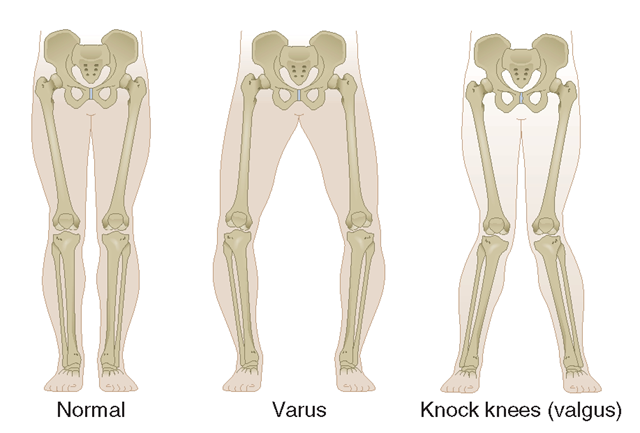The human knee is the largest joint of the body and is made up of four bones, cartilage, four main ligaments, and two main tendons.
Bones of the Human Knee
There are four bones associated with the human knee joint – femur (thighbone), tibia (shinbone), fibula (calf bone), and the patella (kneecap).
Of these bones, the oddest looking one is the kneecap. From an x-ray, the patella appears to just be floating in front of the knee but is actually connected to the thighbone and shinbone by ligaments and tendons. The patella protects the front of the knee and allows leverage for movement.
Cartilage
Surrounding the ends of the bones in the human knee joint is smooth tissue called articular cartilage. It allows smooth frictionless movement of the bones over one another.
Between the femur and tibia is another type of cartilage that is rubbery and tough called the meniscus. The meniscus acts as a shock absorber and helps with knee stabilization.
[divider height=”1″ width=”250px” bg_color=”#34ceda” margin_top=”20″ margin_bottom=”20″ alignment=”center” display_icon=”off” /]
In need of Knee Pain Rehabilitation? Schedule an Appointment Today!
If you have any questions, or want a consultation with a professional, feel free to call, or schedule an appointment online at any of our Bergen County or Passaic County offices in New Jersey. Choose from Glen Rock, Franklin Lakes, Fair Lawn, Ho-ho-kus/Ridgewood, and/or Clifton – we make it possible for you to visit any of our offices at your convenience.
[divider height=”1″ width=”250px” bg_color=”#34ceda” margin_top=”20″ margin_bottom=”20″ alignment=”center” display_icon=”off” /]
Ligaments
Bone is connected to bone via ligaments, and in the knee has two main types of – Cruciate and Collateral.
Cruciate Ligaments
Cruciate ligaments are located on the inside of the knee and prevent forward and backward movement. There are two – the ACL and MCL.
- Anterior Cruciate Ligament (ACL)
The ACL attaches the front of the tibia to the back of the femur and prevents the tibia from moving forward.
- Posterior Cruciate Ligament (PCL)
The PCL attaches the back of the tibia to the front of the femur and prevents the knee from being bent the wrong way and the tibia moving backward.
Collateral Ligaments
Collateral ligaments are found on either side of the knee and control lateral (side to side) movement of the knee – there are also two – the MCL and LCL.
- Medial Collateral Ligament (MCL)
The MCL runs on the inside surface of the knee connecting the femur to tibia. It prevents the knee from collapsing inwards (called a valgus).
- Lateral Collateral Ligament (LCL)
The LCL runs on the outside surface of the knee connecting the femur to tibia. It prevents the knee from getting pushed outwards (called a varus).
Tendons
Tendons connect muscle to bone. The knee has two main tendons, the Quadriceps tendon and the patellar tendon. The muscles of the thigh (quadriceps) come together at the Quadriceps tendon which attaches to the patella. From the patella, the patellar tendon attaches to the muscles of the shin.
Common Knee Issues
As with any joint, there are several injuries that can develop. The most common are:
- Bone Fractures
- Knee Dislocations
- ACL/PCL/MCL/LCL tears or strains
- Meniscal Tears
- Tendon Tears
- Tendonitis
- Arthritis
Each affect function of the knee in different ways and will be elaborated on in future articles, so stay tuned!
[footer title=”Do you, or someone you know need knee pain rehabilitation? We can help you get on the Road to Recovery with a simple consultation.”]

